Over the past few years, adult tricycles have grown increasingly popular. Most people are familiar with the classic upright tricycle and have probably ridden one at some point in their lives, even if it was just during childhood. However, fewer individuals are acquainted with the recumbent tricycle, and even fewer have actually taken one out for a spin. Despite being grouped under the same "tricycle" category, upright trikes and recumbent trikes offer vastly different experiences.
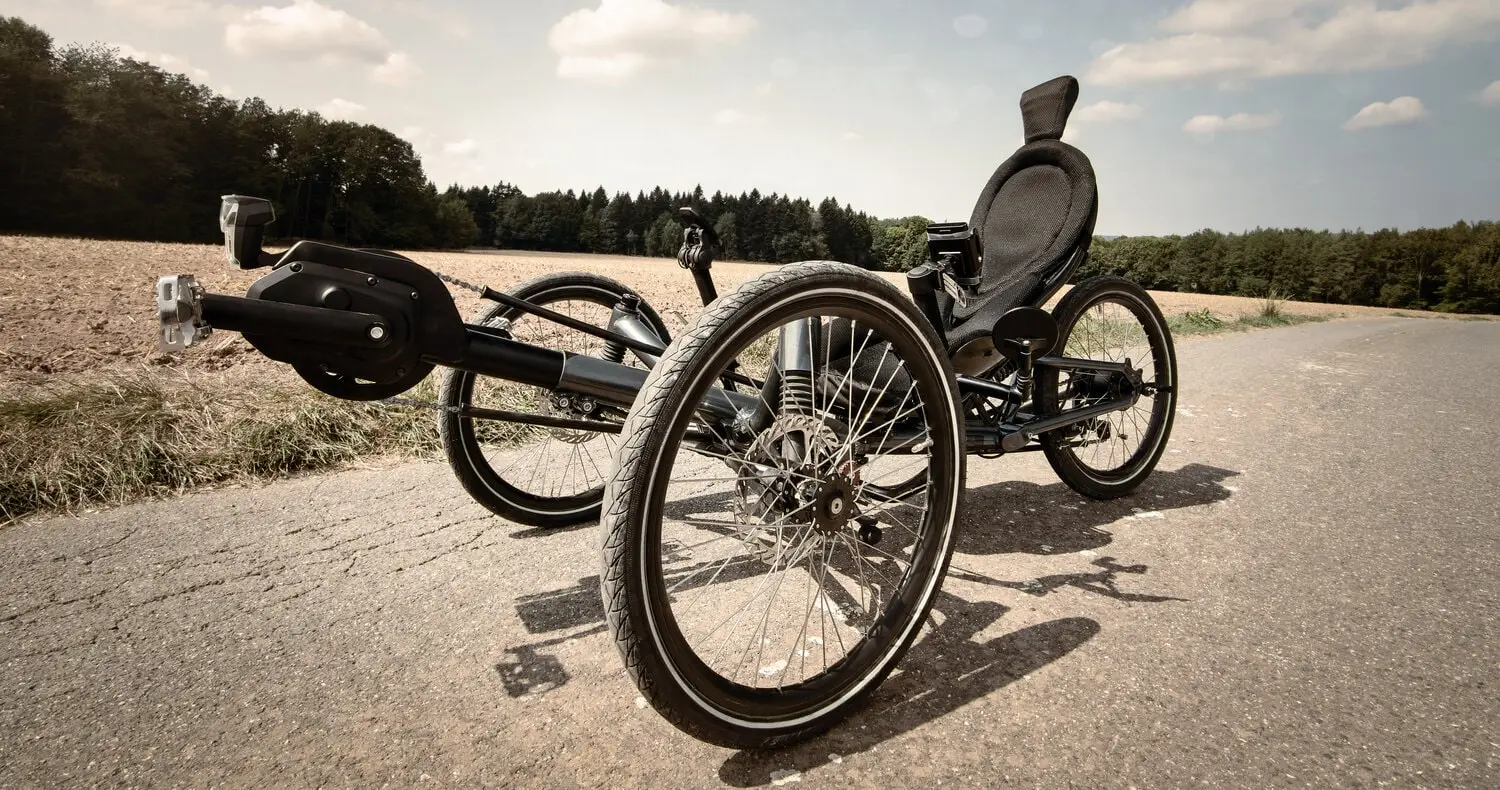
### What is a Recumbent Tricycle?
The term "recumbent tricycle," or recumbent trike, refers to its reclining seating position. The word "recumbent," meaning to lie back or recline, describes the laid-back posture of the rider, which is perhaps its most distinctive feature. Although it's quite different from an upright trike, there are a few key features they share. Both types include a third wheel, a broader seat, and similar braking options.
A typical recumbent trike usually features a wider, more traditional "cruiser-style" seat with a broad base and an integrated backrest rather than the slim, sportier saddles found on many bicycles. The backrest means you don't need to lean forward toward the handlebars like you would on an upright trike or regular bike. Generally, the cranks are aligned horizontally with the seat, allowing you to adopt the recumbent position with your legs extended in front of you, reaching toward the pedals. This posture is described as "very leisurely."
Riding a recumbent trike provides good exercise, but since it doesn't require the same level of balance and stability as a standard bicycle, it tends to be less intense. While a recumbent offers an efficient workout, if your goal is to achieve the highest level of cardio and you're capable of riding a standard bicycle, then a recumbent trike might not be the best choice for you.

### Who Rides Recumbent Tricycles?
Anyone can ride a recumbent tricycle, but many prefer the reclined position for ergonomic reasons. On a recumbent trike, the rider’s body weight is distributed over a larger area, supported by the back and buttocks. Compared to the upright trike position, which places all the weight on the sitting bones, hands, and feet, the reclined position offers a more comfortable and enjoyable riding experience. Those recovering from injuries or surgeries, individuals with specific physical needs, and beginners are most likely to benefit from a recumbent trike.
#### Easier for Those with Specific Physical Needs
Whether it’s due to a particular health condition, the aftermath of an old injury that never healed properly, or simply the natural effects of aging, a recumbent trike provides many people who can't ride an upright bike or trike a safer, easier, and more comfortable alternative. With less stress on the joints, those dealing with osteoarthritis, knee problems, and lower back pain find that riding becomes feasible! Many who suffer from sciatica often discover that a recumbent trike allows them to ride without discomfort.
#### Increased Stability
A recumbent tricycle is far more stable than a standard bicycle or upright trike. The overall design of a recumbent trike aims to provide a steadier, more balanced riding experience, translating to a more comfortable and easier-to-control ride. Anyone who struggles with balance or feels uneasy in the upright riding position would likely feel safer on a recumbent.
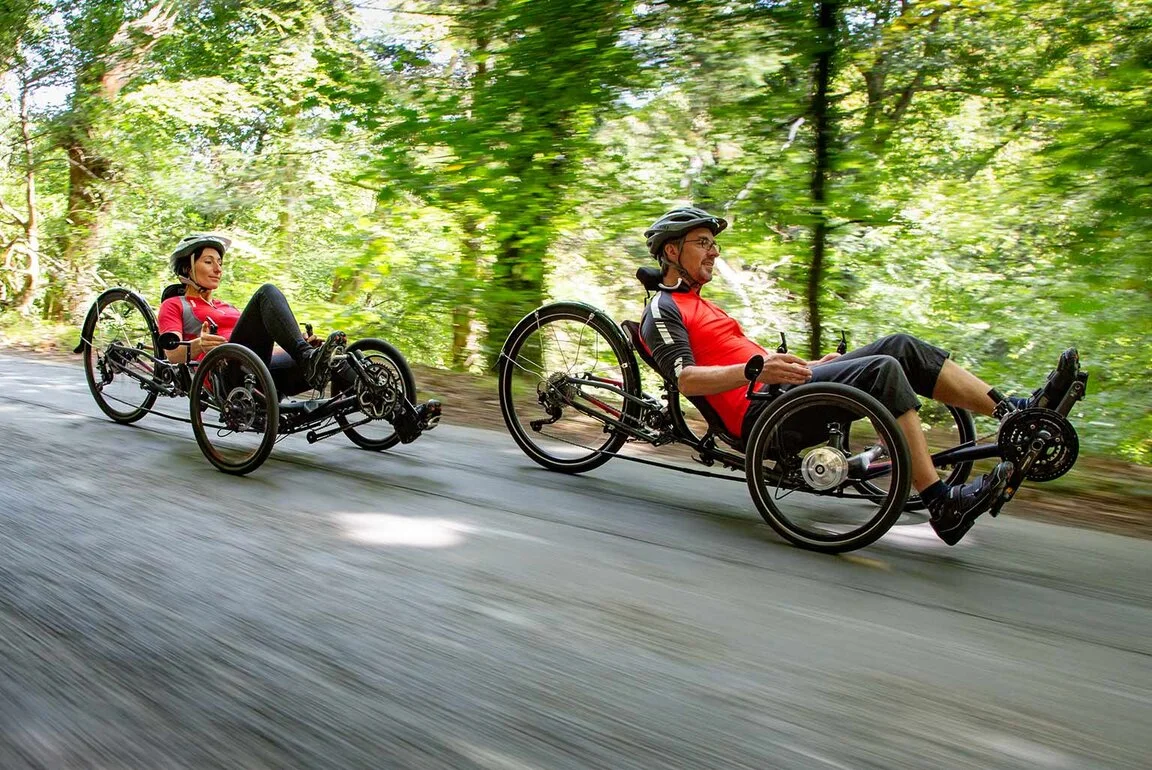
#### Easier for New Riders
Because recumbent trikes are so user-friendly and less intense, they’re perfect for anyone new to cycling. The added stability and comfort also make them a great choice for those unfamiliar with riding.
### History of Recumbent Tricycles
The history of the upright tricycle dates back to the mid-1600s, but the recumbent tricycle didn't appear until much later. In fact, while the first geared recumbents emerged in the 1890s, interest didn’t truly take off until the 1930s.
The first geared recumbents appeared in the 1890s, soon after the rise in popularity of two-wheeled safety bikes. It’s believed that Italian professor Charles Challand from Geneva designed the first geared recumbent, naming it the "Normal Bicycle," a reference to the rider’s more "normal" riding position (compared to the hunched-over stance of non-recumbent vehicles). The recumbent tricycle craze originated from Charles Mochet’s pre-World War I invention, the Velocar, initially designed for his young son George. It featured four wheels, a lower sitting position, and was human-powered.
The original recumbent tricycle design placed the rider directly above the back wheel and allowed them to steer the front wheel. The crank axle was located several inches behind the steering head, and skid-shoe brakes were mentioned in a report of a timber-framed model at a Swiss National Exhibition in 1896. Impressed with Challand’s creation, the American consul in Geneva sent a sketch of it to the State Department, noting its positive impression on the streets of Geneva. Around this time, a Rhode Island man named Irvin Wales applied for a patent for his recumbent bicycle design. Wales’ design included equally sized wheels, cranks behind the steering head, and featured both standard pedals and less conventional hand drives. The hand drive worked similarly to a rowing machine, pulling back and releasing the sliding hand grips attached to the cranks by cables.
The recumbent tricycle design proved to be significantly faster, more efficient, and safer than its two- and three-wheeled counterparts, quickly gaining traction in the world of racing. Recumbents excelled in races, setting new speed and efficiency records! Their impressive performance drew the attention of professional and amateur cyclists alike, sparking a heated debate: Is the recumbent bicycle really a bicycle? The Union Cycliste Internationale (UCI), formed in 1900 to oversee competitive cycling through rule development and oversight, was tasked with settling the issue. After a formal vote, the UCI concluded that the recumbent was not a bicycle and banned them from racing in 1934, effectively sweeping these machines under the rug until the 1970s.
In 1969, *Popular Mechanics* featured a unique machine designed by Robert Riley—the Ground Hugger. In the mid-1970s, MIT professor David Gordon Wilson and Chester Kyle “rediscovered†them nearly 50 years later, and the rest is history. In 1975, the International Human Powered Vehicle Association (IHPVA) was established, with Wilson becoming both an early supporter and one of the organization’s original directors. That same year, eight recumbents were entered in the first IHPVA-hosted International Human-Powered Speed Championship, sparking steady growth in interest for the recumbent.
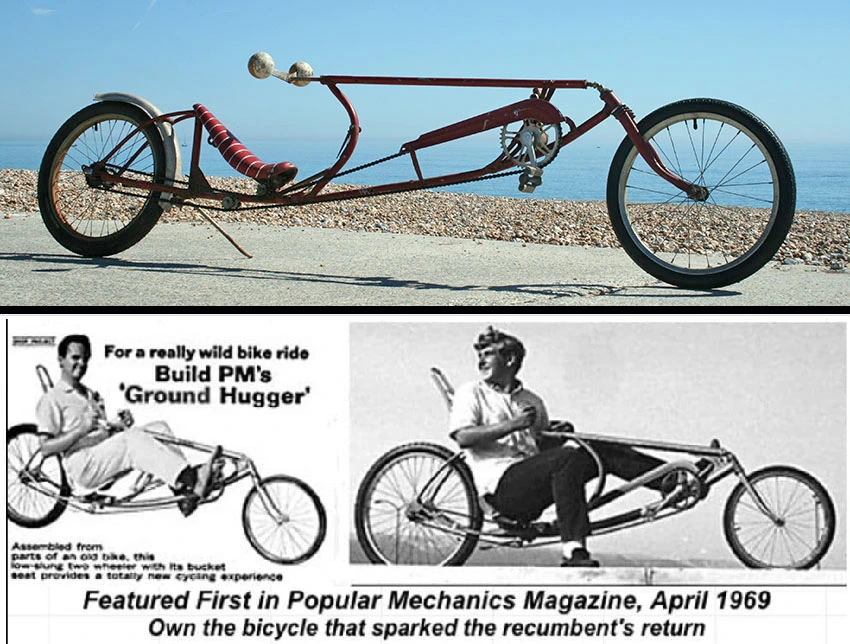
### Types of Recumbent Tricycles
Similar to upright tricycles, there are several recumbent trike designs available, ensuring there’s something for everyone. With rising interest, many bike shops have expanded their recumbent inventory, providing better chances to test ride one before purchasing. Whichever style you choose, ensure you feel comfortable and safe.
#### Delta
The delta design features two wheels at the back and one at the front, resembling a standard upright trike. Instead of an upright position, it places the rider in a reclining position with a backrest. One or both rear wheels can be driven, while the front is used for steering (the typical layout). Steering can be achieved through a linkage with handlebars under the seat (underseat steering) or directly to the front wheel with a large handlebar (overseat steering).

#### Tadpole
Tadpole tricycles, or reverse trikes, have a recumbent layout with two steered wheels at the front and one driven wheel at the back. There is one tadpole design where the front wheels are driven while the rear wheel steers.

#### Tandem
Tandem recumbent tricycles are similar to tandem bicycles in that they allow two people to ride together. Instead of being upright on two wheels, riders of tandem trikes are in a recumbent position with an extra-strong backbone frame to support the additional rider’s weight.

### Features to Be Aware Of
Many of the recumbent trike's features are similar to those of an upright trike. Understanding the basics is crucial in finding the trike that best suits your needs.
#### Brakes
Safety-wise, brakes are among the most important parts of a trike. Therefore, it's essential to equip your bike with the best brakes you can afford. The two main brake designs available for trikes are coaster and hand brakes. Coaster brakes are activated by pedaling backward and are not particularly common on recumbent trikes, whereas hand brakes are operated by a hand lever.
Whenever possible, opt for locking hand brakes, which offer safer and more efficient stopping power while also preventing the bike from rolling away. Hand brakes can be placed at the front or rear of the bike, but for those who prefer to err on the side of caution, they can be installed at both the front and the back. Some high-end tadpole recumbents use two brake levers that independently control the brakes on the corresponding front wheel. Trikes are often equipped with locking brake levers that function similarly to a car's parking brake. Several brake designs can be found on a bicycle or tricycle, but drum and disc brakes with single-handed control are most common on recumbents.
Disc brakes have become widespread on various bikes, and the technology can now be found on trikes. Disc brakes can be cable-actuated and hydraulic, with the latter offering significantly more power and better modulation. The design of trike disc brakes is the same as those installed on most motor vehicles, consisting of a metal disc anchored to the wheel hub and brake pads pressed against the disc through a mechanical or hydraulic caliper. Disc brakes are preferred over other braking systems because they can handle challenging riding conditions, can be installed on the front or rear of the bike, and are exceptionally powerful. In fact, disc brakes are a "must" for anyone riding hilly terrain.
Modern drum brakes, often called hub brakes, are unaffected by moisture or a bent wheel, making them a better overall option. Keep in mind that older drum brake models are known to overheat.
While both disc and drum brakes are effective in stopping a trike, they are not created equally. Performance often depends on riding conditions, including weather and terrain. Some high-end tadpole recumbents use two brake levers that independently control the brakes on the corresponding front wheel. Trikes are often equipped with locking brake levers that act similar to a car's parking brake.
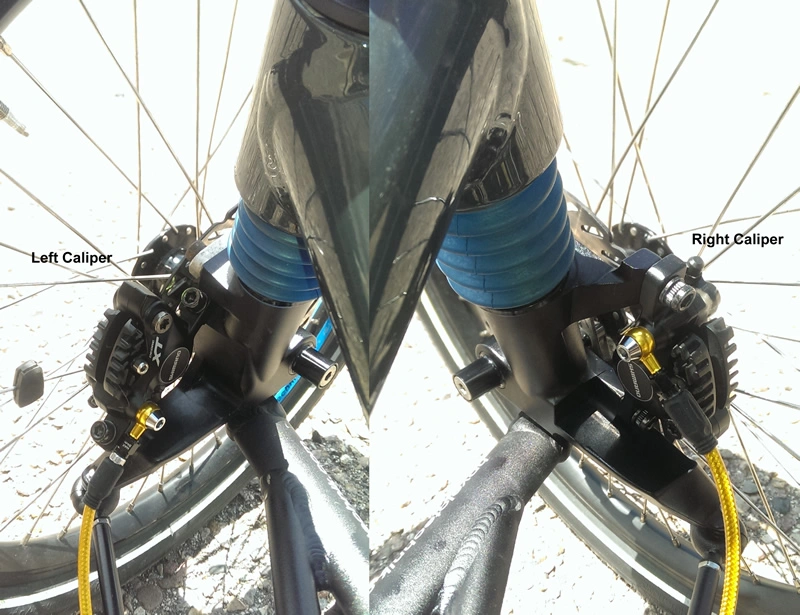
#### Drivetrain, Shifter, Gears
A drivetrain, shifter, and gears will only be a consideration if you plan on getting a geared trike; single-speed trikes don’t require these components. When it comes to trike drivetrains, there are two choices: standard derailleur or geared bike hub. While a standard bicycle derailleur is lighter and more efficient, a geared hub is notably lower in maintenance and more reliable. It’s also possible to get a hub with automatic shifting.
Bar-end shifters designed for triathlon bikes are common on trikes because they work very well on vertical handlebars. While most trikes require two-handed controls, some can be retrofitted to single-handed controls.
#### Cargo Carrier
There are multiple ways to carry your belongings. Racks, mounts, and bags are all common methods to transport cargo on a recumbent trike. Ultimately, the best method to haul your items from point A to point B will be very specific to you and your needs.

### Accessories
Just like riding a bicycle or upright tricycle, there are some essential accessories you should never ride without. To best protect yourself and your recumbent trike, always ensure you’re riding prepared.
#### Helmet
No matter what riding position you’re in, a helmet is always the most important accessory. Even though recumbent trikes place you closer to the ground, it doesn’t mean you’re not at risk in the event of an accident. Always wear a helmet—even if you’re just going out for a “quick ride around the block.â€
#### Lock
Don’t assume no one is interested in your recumbent trike. In fact, there are plenty of thieves out there who wouldn’t hesitate to take any trike they find unlocked or locked insecurely. A durable U-lock is the best line of defense. Avoid cable locks and flimsy chains, as there’s nothing stopping someone from using standard bolt cutters to snap through either, before riding off with your beloved trike.
#### Lights
Carrying a well-charged bike light in your arsenal is always highly recommended. You might not plan on staying out into the dusk hours, but accidents can happen unexpectedly. Having lights will promote a safer ride. Strategically placing a couple of lights onto your trike will make you visible to whoever you encounter on the road or along your riding path.
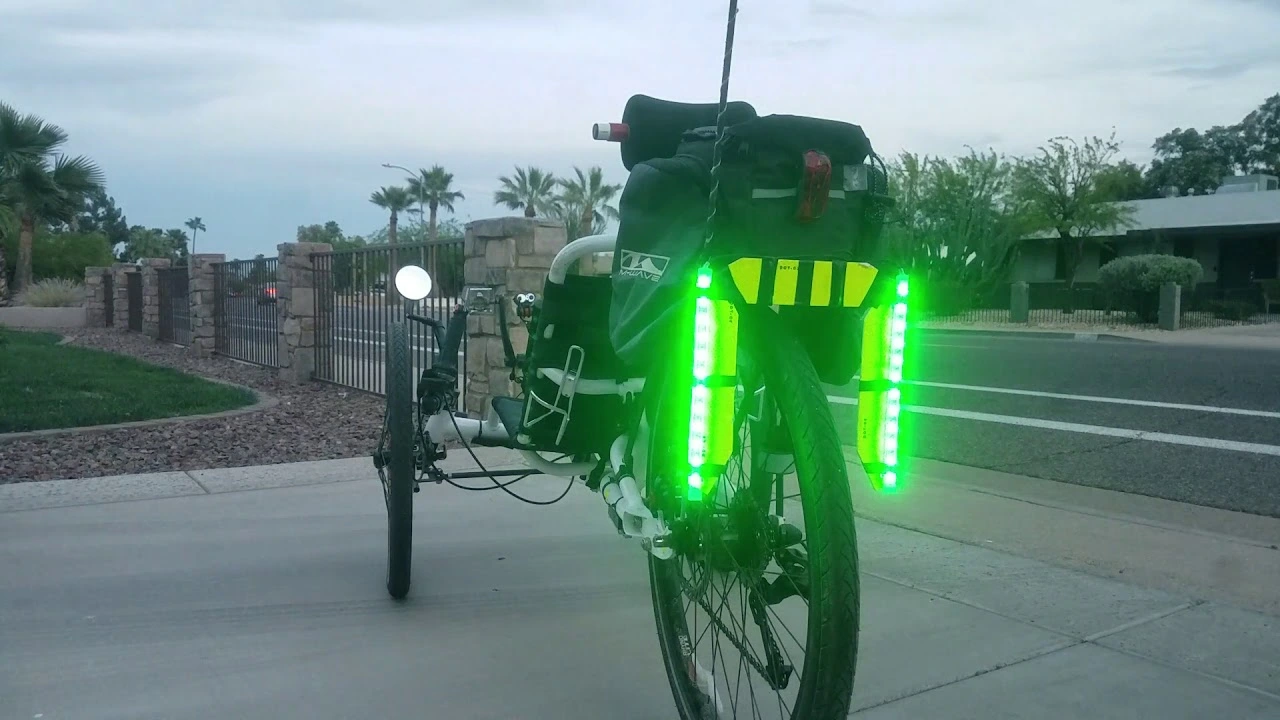
#### Bell or Horn
The recumbent position can make it difficult for others to see you because it places you much lower to the ground, so adding lights is one way to enhance your road presence. Another way to do that is by equipping your trike with a bell or horn. While it doesn’t technically make you more visible to others, the sound of a bell or horn certainly draws attention and helps communicate to others that you’re there.
#### Bike Flag
While not especially common, a bike flag is a simple accessory that can make a big difference. Flags draw more attention to your road presence; a motorist might not see you or your trike, but there’s a good chance they’ll see the flag. With so many options available, they’re an easy way to add some personality and flair while enhancing riding safety.

#### Water Bottle Holder
A water bottle holder is a must if you want to stay hydrated. Some recumbents come with built-in water bottle holders, while others require the owner to purchase and install one separately.
#### Phone Mount
With so many phone mounts available for various purposes and mounting surfaces, it’s easy to assume any mount will do. However, many recumbent cyclists have discovered that mounts designed for upright riding tend to be around 90 degrees off because they don’t account for a reclined position. To avoid this frustration, opt for a mount that allows the user to fully rotate the device, ultimately positioning it to the angle needed.
#### Mirrors
Due to its low-to-the-ground orientation, it can be harder for motorists to see recumbent cyclists. As a result, mirrors on recumbents are more common than on upright trikes and bikes. Standard, inexpensive mirrors can be purchased almost anywhere bike parts and accessories are sold, but many have complained that cheaper models offer compromised visibility due to mirror mount instability, poor materials, and overall bad design. Whenever possible, opt for glass-based mirrors instead of plastic and look for a reputable brand known for the durability of its products. Hand bars and grab handles are the best places to attach a mirror. (Note: Installing mirrors on the front mudguards will likely result in excessive shaking and is not advised).
### Insurance
Regardless of what you ride, it’s important that both you and your wheeled steed are protected. Locking up whenever you leave your bike unattended, including when storing it in a garage, wearing your helmet, and making yourself more visible through the use of flags, lights, and bells or horns are all ways you can actively protect yourself. But for those times when the unexpected occurs and you don’t know what to do, consider bicycle insurance. Velosurance is a bicycle insurance company that offers policies for tricycles as well, and having coverage for you and your trike could prove to be a lifesaver. Whether your trike’s been stolen, damaged in transit, or has a flat that’s left you both stranded, Velosurance is there for you.
America's favorite tricycle
Free instant quoteClutch Release Bearing For Chinese Trucks
Clutch Release Bearing For Chinese Trucks,Clutch Release Bearing Parts,Clutch Bearings,Clutch Release Throwout Bearing
Hangzhou Kangxin Bearing , https://www.cnkxb.com
